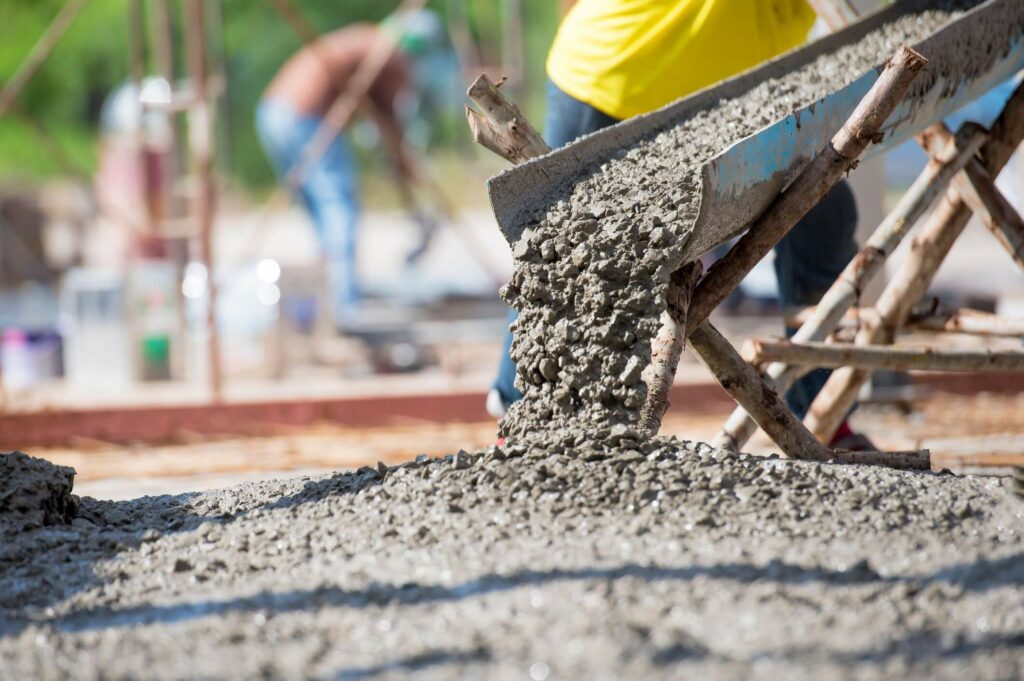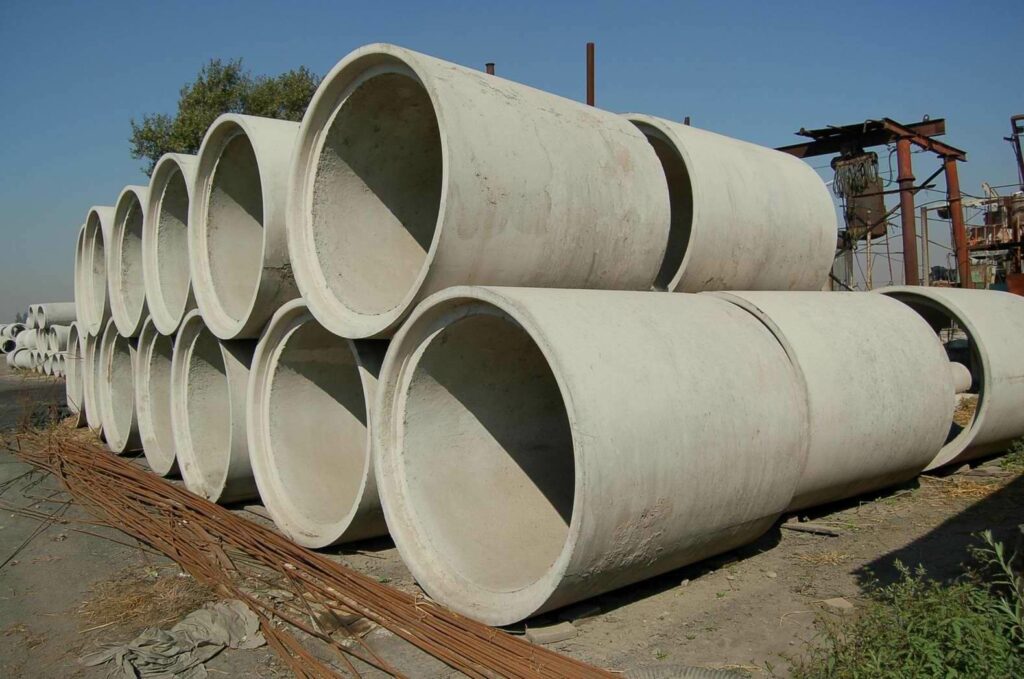A Concrete Tube Estimator is a calculator that calculates how much concrete is needed to fill a certain number of tubes with the dimensions and density that you specify beforehand. This calculator will tell you the total weight needed, total cost, and the number of bags needed to cover the defined area (cubic yards, meters or feet).
Take a look other related calculators, such as:
Thinset Calculator
Gallons per minute
PSI to GPM Calculator
Grout Calculator
Concrete vs Cement

Generally, people don’t understand the real use of both terms: concrete and cement. The majority even believe that they represent the same thing; however, they are wrong. Cement is a more broad term and represents an ingredient of concrete. We use cement to produce it. On the other hand, concrete is a mixture of water, cement, sand, and/or crushed stone. Between 10 and 15 percent of cement is included in producing concrete.
Concrete – Types and their Usage
There are over 10+ different types of concrete, but in this section, you will learn about the most common types and their usage.
Normal Strength
Normal strength is a mixture of concrete, sand, and aggregate with a mix ratio of 1:2:4. It is normally used for pavements and structures which are not under heavy pressure caused by wind or vibrations.
Ordinary
Almost identical type compared to the normal strength concrete. It has the same mix ratio and usage.
Reinforced
Used in modern construction backed up by the strength of wires and steel rods. It provides vastly higher strength than ordinary concrete.
Prestressed
Aimed for bridges and structures for heavy load transport.
High-Density
Used for constructing atomic power plants providing high radiation resistance.
Ready-Mix
Ready-Mix concrete is prepared before it gets transported to the site, where workers pour it and use it for different means. It has great precision.
Rapid-Set
When you are running out of time to complete the project, rapid-set concrete may be the best option. It has a good resistance against low temperatures, and it can be used both in winter and summer.
Asphalt
Asphalt is a type produced by a mixture of hydrocarbons, mostly used for roads, highways. It is stable, durable, and flexible.
Concrete tube – Definiton

A concrete tube or a column is a round column filled with concrete used in construction as blocks to support heavy loads vertically. See this related Concrete Block Calculator.
How much concrete is in a tube?
Depending on the height of a tube (round column), here is a table that shows you how much concrete is in a tube per 1 ft height.
| Tube Size | Volume (cy – cubic yards – per linear foot) |
| 12 x 12 | 0.037 |
| 13 x 13 | 0.043 |
| 14 x 14 | 0.050 |
| 15 x 15 | 0.058 |
| 16 x 16 | 0.066 |
| 17 x 17 | 0.074 |
| 18 x 18 | 0.083 |
| 19 x 19 | 0.093 |
| 20 x 20 | 0.103 |
| 21 x 21 | 0.113 |
| 22 x 22 | 0.124 |
| 23 x 23 | 0.136 |
| 24 x 24 | 0.148 |
| 25 x 25 | 0.161 |
| 26 x 26 | 0.174 |
| 27 x 27 | 0.188 |
| 28 x 28 | 0.202 |
| 29 x 29 | 0.216 |
| 30 x 30 | 0.231 |
Concrete Tube Calculator – Formula
V = \pi \times (OR^{2} - IR^{2}) \times HWhere,
V – Volume, total concrete needed for a tube
OR – Outer Radius of a tube
IR – Inner Radius of a tube
H – Height (length)
The following formula can help you to calculate both radii (outer & inner):
R = \frac {D} {2}Where D stands for diameter.
Concrete Tube Calculation: Step-by-step
We have gotten familiar with the formula for estimating how much concrete is needed for an area. So, let’s use our calculator for a tube and explain the process step by step.
- Measure the dimensions of a tube (outer and inner diameter)
- Stay consistent with the measurement units (Choose any of the available units: centimeters, meters, inches, feet..)
- You need to know the length (height). You can measure it by checking how long vertically the round column is.
- Determine the density of pre-mixed concrete and enter the value in the calculator.
- Enter the size of a bag (how much a single bag can contain)
- Select the Waste percentage (how much you expect to waste due to spilling)
The calculator will take all the values and make calculations to give you information about:
- How many bags you need (quantity)
- The volume of the round column
- The cost per bag
Concrete Tube Estimator – Elements
Our calculator consists of several elements (variables) that you can enter or calculate. Here is a list of all elements:
- Outer diameter (diameter of an outer circle)
- Inner diameter (diameter of an inner circle)
- Height (length of a tube)
- Quantity (how many pieces)
- Volume (square footage)
- Density (The density of the wet concrete)
- Weight (Total weight needed)
- Bag size (The total size of a bag)
- Waste
- Bags needed (Total number of bags needed)
- Total cost
Concrete Estimator – Tube: An Example of Usage
Let me show you how our calculator for a tube works in the example below.
Scenario: Suppose we need to fill a tube with concrete of dimensions:
Outer diameter: 25 feet
Inner diameter: 22 feet
Height: 100 feet
Then, we choose how many tubes (quantity) we need to fill. For example, let’s pick 3 pieces.
Find information on the bag about its density. I will choose 200 pounds per cubic foot.
To estimate needed concrete for the tubes, let’s define waste percentage and bag size:
Waste: 5%
Bag size: 100 pounds
The calculator will take the values and estimate how much concrete is needed for the tubes. In our case:
Volume: 33,222.16 cubic feet
Weight: 3,013.88 tons
Bags needed: 69,766.97
If you need to estimate the project’s total cost, you can input the cost per bag, and the calculator will return it.
Concrete Tube – Real-world applications
Each tube has a steel frame in its composition, which brings more strength and resistance to different types of vibrations and pressure. In construction, tubes are used as supporting blocks that reinforce the building and balance the load pressure. In addition, they look more appealing and take less space than square-shaped blocks. Therefore, you can mainly find their appliance in bridge constructions or interior parts of the buildings when it is expected to have people and cars regularly pass by it. Additionally, we use tubes for filing and elevating construction structures.
FAQ
How much is a cubic yard of concrete?
One cubic yard covers an area of 27 square feet at one foot thick.
How do you calculate the cost of concrete?
You can calculate the cost of it by using our concrete weight calculator for tubes. You need to enter the dimensions of a tube, density, and bag size. Then, the calculator will calculate the total cost of concrete.
What sizes do concrete tubes come in?
Some of the most common dimensions that tubes come in are with the following diameters:
6” (152 mm)
8” (203 mm)
10” (254 mm)
12”(305 mm)
How many 80lb bags of concrete make a yard?
To fill an area of a yard, you need 45 bags with the size of 80 pounds of concrete.
How much do you pay for a bag of concrete?
It depends on the size of the bag. For a typical 50-pound bag, you need to pay between $3 and $4, while a bag with an 80-pound weight would cost you about $5.
